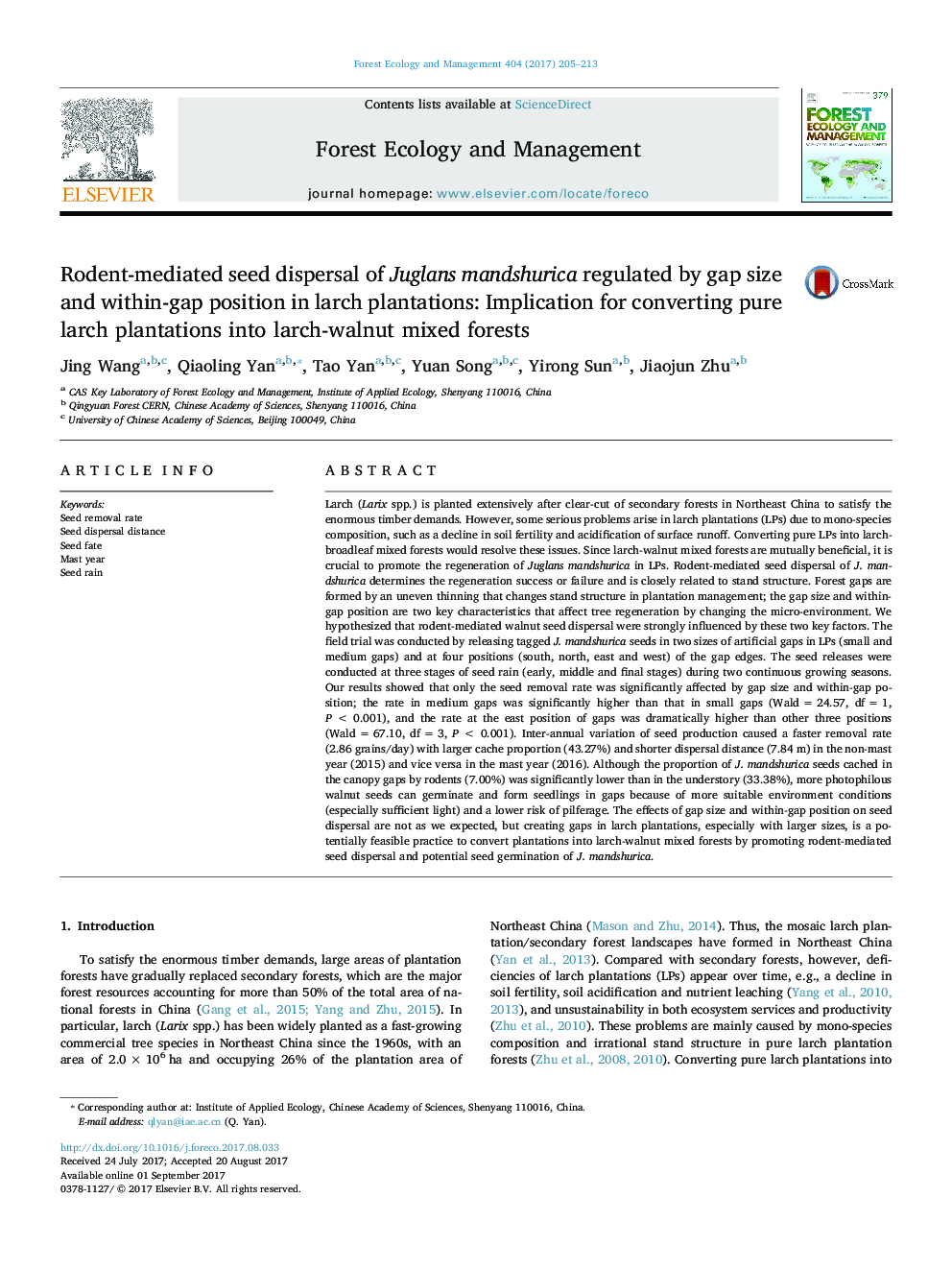| Article ID | Journal | Published Year | Pages | File Type |
|---|---|---|---|---|
| 6459161 | Forest Ecology and Management | 2017 | 9 Pages |
Larch (Larix spp.) is planted extensively after clear-cut of secondary forests in Northeast China to satisfy the enormous timber demands. However, some serious problems arise in larch plantations (LPs) due to mono-species composition, such as a decline in soil fertility and acidification of surface runoff. Converting pure LPs into larch-broadleaf mixed forests would resolve these issues. Since larch-walnut mixed forests are mutually beneficial, it is crucial to promote the regeneration of Juglans mandshurica in LPs. Rodent-mediated seed dispersal of J. mandshurica determines the regeneration success or failure and is closely related to stand structure. Forest gaps are formed by an uneven thinning that changes stand structure in plantation management; the gap size and within-gap position are two key characteristics that affect tree regeneration by changing the micro-environment. We hypothesized that rodent-mediated walnut seed dispersal were strongly influenced by these two key factors. The field trial was conducted by releasing tagged J. mandshurica seeds in two sizes of artificial gaps in LPs (small and medium gaps) and at four positions (south, north, east and west) of the gap edges. The seed releases were conducted at three stages of seed rain (early, middle and final stages) during two continuous growing seasons. Our results showed that only the seed removal rate was significantly affected by gap size and within-gap position; the rate in medium gaps was significantly higher than that in small gaps (Wald = 24.57, df = 1, P < 0.001), and the rate at the east position of gaps was dramatically higher than other three positions (Wald = 67.10, df = 3, P < 0.001). Inter-annual variation of seed production caused a faster removal rate (2.86 grains/day) with larger cache proportion (43.27%) and shorter dispersal distance (7.84 m) in the non-mast year (2015) and vice versa in the mast year (2016). Although the proportion of J. mandshurica seeds cached in the canopy gaps by rodents (7.00%) was significantly lower than in the understory (33.38%), more photophilous walnut seeds can germinate and form seedlings in gaps because of more suitable environment conditions (especially sufficient light) and a lower risk of pilferage. The effects of gap size and within-gap position on seed dispersal are not as we expected, but creating gaps in larch plantations, especially with larger sizes, is a potentially feasible practice to convert plantations into larch-walnut mixed forests by promoting rodent-mediated seed dispersal and potential seed germination of J. mandshurica.
